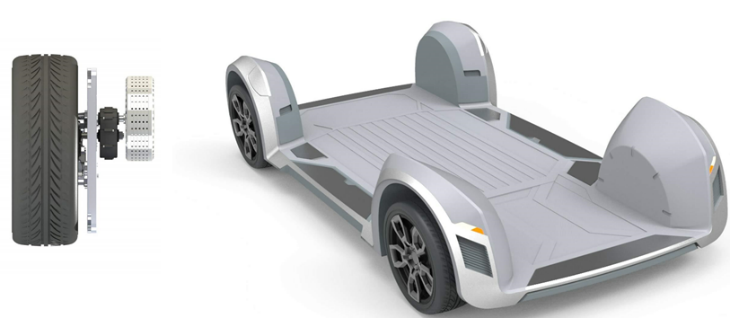I’m a car guy. I’m also a tech guy. So when I see a story that combines car and tech, I’m always interested – even if, these days, such stories do seem to come fast and furious.
The recent article-of-interest appeared last week on EE Times. It reported on two pitches writer Nitin Dahad had recently heard from a couple of early-stage car-tech companies. One of these organizations, the UK’s Academy of Robotics is focused on last mile autonomous delivery. They’re developing an AI-based vehicle called Kar-go. Among the onboard technologies are “a machine-vision system designed by members of the team who worked on the Mars rover,” and “a package-sorting mechanism” that optimizes drop-offs. Kar-go sports an Nvidia Drive supercomputer. (Remember when supercomputers were so crazily expensive that there were only a few of them…) There’s also a Tesla battery, plus plenty of other tech goodies:
Its modular driverless delivery technology combines continuous-time recurrent neural networks (CTRNNs) with CNNs (convolutional neural networks) and long short-term memory (LSTM) to create a top-level controller system which can ‘learn’ from the past, ‘perceive’ its environment and make any necessary corrections. This complex hierarchical system can run on a single NVIDIA GPU-equipped desktop.
The beauty of the Kar-go is that each one will be trained to “become an expert in its particular route, so it can then focus on any abnormalities in that route,” and it will be assigned to work in its own area.
While this is all very interesting, I was more intrigued by the modular universal EV platform that’s coming out of REE, an Israeli startup.
The company integrates all of the components formerly found under the hood into the wheel. It says it offers optimal freedom of design, and the potential for multiple body configurations on a single platform.
Putting the motor, steering, suspension, drivetrain, sensing, brakes,
thermal systems and electronics in the wheel leaves a ‘flat’ platform. This provides a low center of gravity to maximize efficiency and supports the vehicle’s agility and stability. The design also drastically reduces its footprint, weight, and improves both energy-efficiency and performance — aspects crucial for electric and autonomous vehicle development…
Based on a novel quad-motor system, and including active height-levelling suspension, steer-by-wire and a smart quad-gear box, the technology provides the basis of any type of vehicle from a high performance car able to do 0-60 mph in less than 3 seconds to an off-road SUV with advanced active suspension technology. The platform can also be used as the base of a robotaxi or even a 10-ton cross country truck.
Sure, with the advent of electronics, it’s been a while since a tinkerer would pop the hood to take care of so many of their car problems. Old-time VW Beetles used to have the engine in the rear, but that’s the only radically different car “innards” design that I can think of, and that’s not all that radical.
There have been other companies putting motors in the wheels of EV’s, but this is the first one I’ve seen that’s putting steering, suspension, drivetrain, brakes, etc. in there as well.
This looks like a game-changer to me.

 thermal systems and electronics in the wheel leaves a ‘flat’ platform. This provides a low center of gravity to maximize efficiency and supports the vehicle’s agility and stability. The design also drastically reduces its footprint, weight, and improves both energy-efficiency and performance — aspects crucial for electric and autonomous vehicle development…
thermal systems and electronics in the wheel leaves a ‘flat’ platform. This provides a low center of gravity to maximize efficiency and supports the vehicle’s agility and stability. The design also drastically reduces its footprint, weight, and improves both energy-efficiency and performance — aspects crucial for electric and autonomous vehicle development…